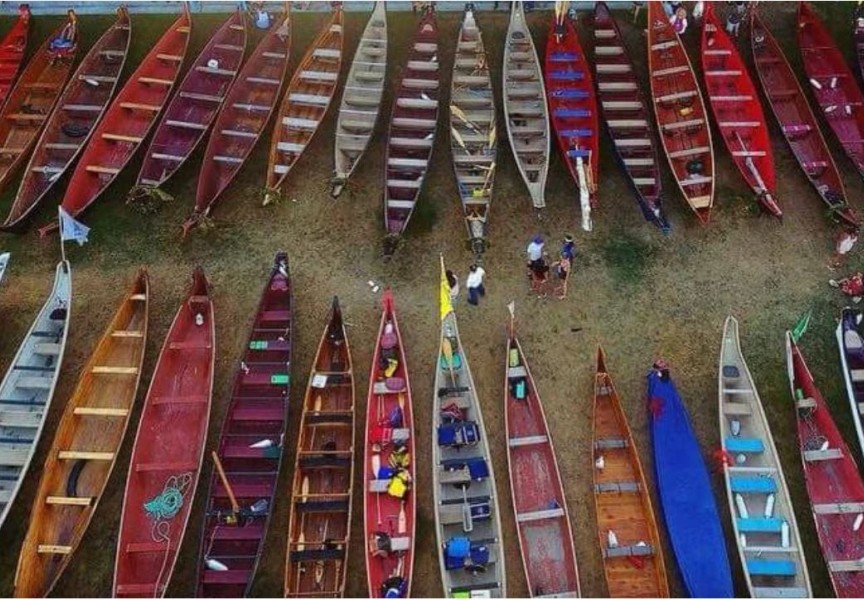Farmed and Dangerous,’ a campaign led by the Coastal Alliance for Aquaculture Reform (CAAR), issued a press release applauding the provincial government for announcing an indefinite moratorium on open net-cage salmon farming in ‘northern BC waters along with the approvals of…two more farms in Clayoquot Sound and Nootka Sound.’
Included in the press release was the article “Something’s going on in Clayoquot Sound…” describing ‘extremely low numbers of Chinook salmon’ in the area. It goes on to blame sea lice around salmon farms as the likely culprit.
Bolstering the claims is a report written by Alexandra Morton, a marine biologist who has been raising serious concerns about salmon farming for several years, mainly in the Broughton Archipelago. Morton was asked to investigate a report from a commercial fisherman that Mainstream Canada’s Dixon Point salmon farm was infested with sea lice.
According to the report, Morton analyzed plankton tows collected near Dixon Point.
“There were more free-swimming larval-stage sea lice in the sample taken from Dixon Point farm than had ever been collected in a single plankton tow in the Broughton-archipelago,” reads her report.
Clayoquot area biologists are reviewing Morton’s methods and comparing the results to sea lice densities in other jurisdictions before drawing any conclusions.
Mainstream Canada and Creative Salmon operate in Clayoquot Sound and both conduct regular sea lice monitoring on their farmed fish, and participate in the Clayoquot Sound Sea Lice Monitoring Group that researches the presence of sea lice on wild juvenile salmon.
Mainstream Canada carries out that monitoring in partnership with the Ahousaht Fisheries crew. Dixon Point is in Ahousaht traditional territory and the farm is operated by Mainstream Canada.
Ahousaht Chief Councilor Keith Atleo said according to their reports, the sea lice infestation is not as high as Farmed and Dangerous is implying. Monitoring, he said, is part of the Science Panel Recommendations, something Ahousaht took part in and embraces.
“We also have an interest in the wild stocks,” said Atleo, adding they wouldn’t allow something that would compromise the wild salmon habitat.
A local, who asked not to be named, said sea lice have always been around; they were found on wild salmon long before the fish farms came to Clayoquot Sound.
There are many other “culprits” hypothesized to account for the poor Chinook returns to Clayoquot Sound, and this is something that the department of Fisheries and Oceans is hoping to investigate, in conjunction with the Central Region Board and the West Coast Aquatic Management Board.
A spokesperson for Mainstream Canada said they would not be making any statements until they have had time to review the press releases.
Insiders from both businesses say what’s being claimed by CAAR is nothing new to them. Spencer Evans, Creative Salmon manager, said the wording used in the Farmed and Dangerous press releases was expected.
“The aquaculture industry has faced a barrage of allegations from environmental groups over the decades and at times it gets discouraging,” he said. In 2007 Creative Salmon won a defamation lawsuit against Don Staniford, a campaigner hired by the Friends of Clayoquot Sound, for defamatory remarks he made against Creative Salmon.
Creative Salmon operates in Tla-o-qui-aht territory. They raise chinook salmon, as opposed to the industry standard Atlantic salmon, and they have a working relationship with Tla-o-qui-aht. They have six sites, but operate only up to four farms at any given time. They recently received approval from the provincial government to relocate one of their sites.
“The Tranquil site is not well suited for fin-fish aquaculture and as a result has not been farmed since 1999. The Warne Island site will give us more flexibility in our fallowing program which will reduce our environmental footprint of our operations,” Evans explained.
He went on to say that The Friends of Clayoquot Sound is trying to put a negative spin on the announcement by referring to it as another salmon farm in Clayoquot Sound, “but we have always had six sites. It’s not another farm; it’s the relocation of an existing farm,” Evans said.
Of B.C.’s ban on fish farms on the northern BC coast, Evans had this to say: “The temporary ban on the north coast has no direct impact on Creative Salmon as we have no plans to expand in that area.
However it sends a negative message to the global investment community and restricts opportunities for people in northern coastal communities. The multi-national companies that operate in BC will invest their money elsewhere. This is a political decision based on emotion, not science.”
The province issued two press releases March 27 regarding salmon farming: One announcing recent aquaculture decisions, including the relocation of Creative Salmon’s site; the other describing the aquaculture suspension on the north coast.
In their release the province says they are suspending the issuance of licenses and tenures for finfish aquaculture in areas north of Klemtu while it examines the feasibility of adopting a new approach to aquaculture management in collaboration with First Nations.
By Denise Titian







